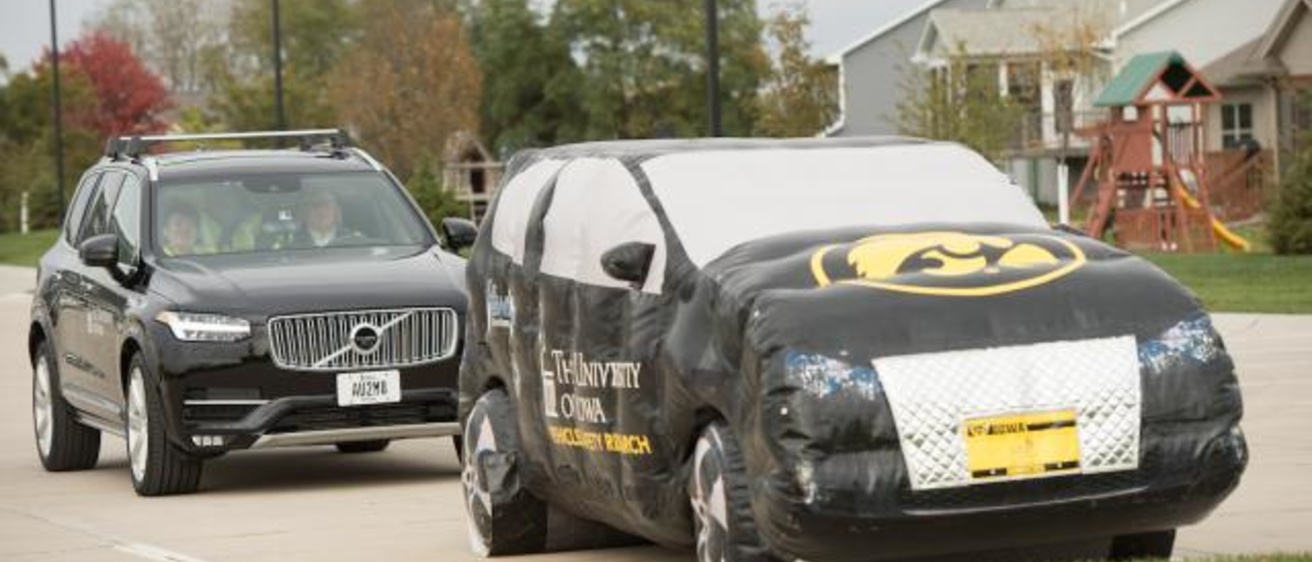By Andrea Zeek
UI Strategic Communication
Building on the University of Iowa’s leadership in advanced vehicle safety technology, associate professor of mechanical and industrial engineering Dan McGehee designed an automated vehicle systems course for graduate-level engineering students to explore technologies such as automatic emergency braking, adaptive cruise control, and lane-keeping systems.
McGehee, director of the UI’s renowned National Advanced Driving Simulator (NADS), says he is teaching the class more like it’s a startup company. He even named it as such: Automated Vehicle Systems Inc.
“Every single day we’re doing competitive analyses, studying the industry, and looking at policy issues, as well as doing the more traditional engineering design and evaluations,” he says.
The class submitted a formal letter and comments on the recently released National Highway Traffic Safety Administration Federal Automated Vehicles Policy. The work is fun for students, McGehee says, because it’s different than their typical classroom experience.
“Engineers are used to taking classes that are more deterministic in nature—where there is an answer to everything mathematically,” he says. “This class really shows students that things are much less certain and ambiguous in the automated vehicle space. They learned that you have to prepare much more broadly when it comes to the design and evaluation of these technologies because they change so fast.”
Industrial engineering graduate student Zach Noonan says he has enjoyed discussing automated vehicle systems news and research in class.
“It’s interesting because we talk a lot about what’s happening as it’s happening,” Noonan says. “[McGehee] asks us to come every week with a new headline to share, and no one has had any trouble coming up with something.”
The class also conducts crash avoidance testing with resources available from NADS.
During one class session, students rode along with McGehee to test the automatic brakes of a car equipped with automatic emergency braking. Driving toward a full-size inflatable car on a closed course, the real car recognized the inflatable car and was able to stop itself a few feet away from impact.
Yang Wu, a master’s student studying mechanical engineering, says before taking this course, he didn’t even know the technology existed.
“Seeing it in real life helped me realize how close it is coming to market,” Wu says.
“Car crashes are a top public health issue in the United States and worldwide. Automotive safety research has been going on for quite some time, but we spent the last 30 years trying to protect the driver with seatbelts and occupant protection systems so that when you get into a crash, you are protected. With automated vehicle systems, the next generation is going to be able to avoid that crash altogether.”
—Dan McGehee, Automated Vehicle Systems Inc. instructor
